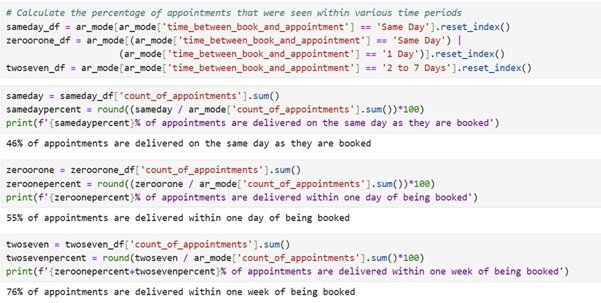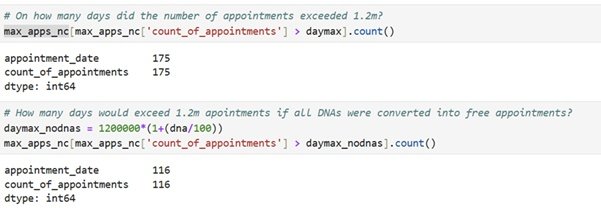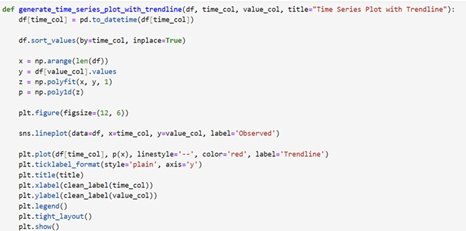NHS Capacity analysis
To test my Python skills, I accessed four publicly available sources of NHS appointments data for the period during and shortly after the Covid-19 pandemic (Jan 2020 - June 2022).
I cleaned and organised the data, using self-build functions and the pandas, numpy and datetime Python libraries before kicking off my analysis proper.
My first (and least surprising) finding was that the four sources of NHS data, did not perfectly align. This is to be expected from an organisation as large and complex as the NHS, with multiple reporting routes, governance structures and data categories. But every source contained a piece of the puzzle which I could build into my analysis, whether on appointment location, duration, type, staffing or provider.
My analysis found that:
The dip in GP appointments at the start of the pandemic (March 2020) was quickly reversed, with appointments returning to normal levels within 6 months, and reaching record highs by late 2021
The NHS breached its (notional) 1.2m primary care appointments per day target on almost every weekday during this period, but weekend appointments remain very low
The proportion of people receiving a GP appointment within this period varied widely by sub-ICB, with more than twice the proportion (1 in 317 vs 1 in 741) of the local population receiving an appointment in the ‘busiest’ sub-ICB (NHS Humber & North Yorkshire ICB - 03H) compared to the ‘least busy’ (NHS Greater Manchester ICB - 02A)
Almost half of all primary care appointments were deliverd by non-GPs during this period, with this proportion likely to have increased over time following use of the Additional Roles Reimbursement Scheme (ARRS) to recruit additional pharmacists, social prescribing link workers, and mental health practitioners
Almost half (46%) of all primary care appointments take place on the same day they are booked, with more than three quarters (76%) delivered within a week of booking.
There was no clear relationship between the proportion of appointments offered online or via the telephone, and overall appointment capacity.
Over time, as demand for primary care appointments in the NHS continues to grow (appointments reached an all time high of 38.5m in October 2024), it is likely that solutions to NHS capacity challenges will include:
Developing additional weekend capacity to manage peaks in demand on weekdays (particularly Mondays)
Examining the number of appointments offered at the sub-ICB level, and enabling cross-learning in an effort to combine the efficiency of the ‘busiest’ areas, with the (likely) better public health of the ‘least busy’ areas
Contining to use non-GP staff to deliver a substantial proportion of primary care appointments
Developing an effective approach to maximising telephone and online appointments to maximise local capacity
If you are interested in digging into your data to better understand, and then grow, your business, get in touch (ciaran.osborne@gmail.com) and we can help!












